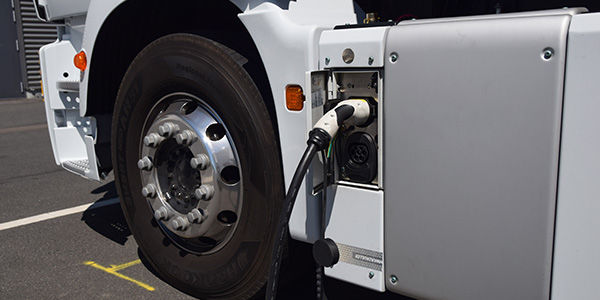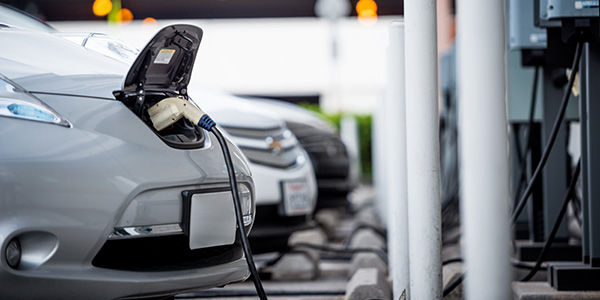The year 2021 is shaping up to be the most exciting in commercial vehicles with electric-powered trucks. Many companies are working on their models, and it seems that this change will happen soon. Freightliner, Rivian Automotive Company Inc., Volvo AB, and Tesla have all created prototypes of what these vehicles might look like. And many corporations such as SoCal Edison have been testing trucks as an alternative mode of transportation for goods delivery.
Fleet managers are encouraged to follow COMVOY while we keep an eye on trends like the US Government regulations that continue to push rapid deployment of automobiles and trucks. VW, Ford, and Mercedes are in the lead for delivery and Class 8 vehicles.
Costs for battery-electric vehicles are also decreasing, and companies are working with the government on needed infrastructure.
EVs for Transit are On Their Way
Battery-electric trucks have only recently become available for testing and use. However, Amazon, Freightliner, and Tesla are road-testing Class 8, Box, and delivery EVs with large corporations and state utilities. Included within established manufacturers, companies like Arrival and Rivian are also connecting with corporations' transportation needs.
Rivian began partnerships with Amazon and UPS last year for battery-electric last-mile delivery vehicles. In addition, Tesla received pre-orders from over ten major corporations, including PepsiCo, Walmart, and FedEx.
Daimler's Freightliner has made up the most ground with its eCascadia and eM2 line of electric trucks. The eCascadia big rig was designed for regional transportation and port service, while the eM2 is perfect for local distribution. Most recently, the giant utility company, Southern California Edison/Edison International, has been testing the eCascadia for over a year and says they are delighted with it and look forward to receiving their fleet orders.
Zero-emission freight vehicle availability is expected to increase from 24 manufacturers producing 70 different models to over 30 companies, which will increase to a total of 85 for fleet purchases in North America.
One of those new manufacturers, Volvo Trucks of North America, has begun producing a Class 8 VNR Electric model. In addition, Peterbilt and Kenworth are also developing and delivering Class 8 trucks. So, for these and other manufacturers, the sentiment is that we'll soon see electric trucks available across North America.
In the meantime, manufacturers are also working on carbon-neutral production through investment in a combination of renewable electricity and energy efficiency.
 Regulations are a Driving Force for EV Adoption
Regulations are a Driving Force for EV Adoption
Government regulatory agencies have been pushing a move towards zero-emission vehicles for some time. States like California actively restrict, through regulation, future sales of ICE vehicles. And regulations on diesel transport vehicles are putting pressure on a need for model availability and infrastructure changes.
California's Air Resources Board (CARB) has said that commercial truck and van manufacturers need to sell zero-emissions trucks as an increasing percentage of their annual statewide sales via its innovative Advanced Clean Trucks rule. This clearly signals to the industry that electric trucks are coming, and CARB is also developing complementary policies such as ZEV credits for medium-duty vehicles.
In June 2018, California's Air Resource Board enacted regulations requiring all new heavy transport trucks to be essentially emission-free by 2025. In addition, by 2029, CARB will eventually require pure battery power or hydrogen fuel cells instead of fossil fuels powering all commercial trucks and vans. CARB believes that large diesel engines emit an equally large number of particulates into the air, forcing manufacturers' regulations to halt diesel use. With the rules set to effect in 2024, manufacturers must develop technological innovation and engineering to pivot towards a new power unit. It doesn't happen overnight. Regardless of the amount of work and costs required, the California Air Resources Board regulations are changing the transportation and logistics industry throughout the United States.
To assist with the cost and infrastructure to support this massive technology change, the US government desires to enact legislation that provides incentives to manufacturers and the end-user of the soon to be available transportation EVs. However, trucking industry EVs are set to be considerably more expensive than current diesel-based vehicles.
Declining costs
COMVOY understands fleet owners don't have massive surplus cap-ex funds for equipment regardless of their feelings about the environment. Add the reality that current diesel-based trucks can last hundreds of thousands of miles and be in service for decades, and change will be slow.
For those companies who have vehicles going out of service, prices will come down as more models arrive and competitors flood the market. Battery prices, which have declined 89 percent in the last decade, are also expected to continue to fall.
BloombergNEF's annual Battery Price Survey anticipates that battery price drops will drive EV prices to be like internal combustion engine vehicles within a few years.
Expanding Infrastructure
Utilities are working with fleets to properly construct charging infrastructure to support the increased number of e-trucks on the road. In addition, make-ready programs can help provide funding for necessary upgrades, such as new transformers and meters.
States are developing new policies and rate designs to provide financial support for clean energy projects. One example would be supporting the installation of panels or conduits required along dedicated routes where trucks will pass through repeatedly. Other initiatives include incentivizing low-emission trucking fleets by lowering fixed costs on electricity rates charged by utilities. Lowering rates would make clean power more cost-competitive with traditional diesel fuel. In addition, the construction, permitting, and procurement processes for infrastructure engineering are being developed.
To encourage the use of electric vehicles, public charging infrastructure is being built across North America. For example, Tyee Solutions Society's West Coast Clean Transit Corridor Initiative proposed to place 27 charging sites along I-5 at 50-mile intervals for medium-duty electric vehicles, such as delivery vans, by 2025.
Then, later, 14 of the 27 charging sites would be expanded to also accommodate charging for big electric rigs by 2030, when it is estimated that 8% of all trucks on the road in California could be electric.
And DTNA is partnering with Portland General Electric to open "Electric Island," a large public charging site for medium- and heavy-duty electric commercial vehicles expected to be the first of its kind in the United States.
 Making it Real
Making it Real
The truth is that plans, hopes and dreams are one thing, making them real requires more than words from a government policy. OEMs are building the vehicles but without an infrastructure, it will be a long time before dreams of interstate highways full of chargers will be realized. Even in cities, commercial vehicles require more infrastructure and demands on the grid.
Innovation will need to be supported by collaboration on every level if zero-emissions vehicles will work in the logistics, transportation and commercial industry. It will be an interesting decade ahead, indeed. And COMVOY will be plugged in with you.



